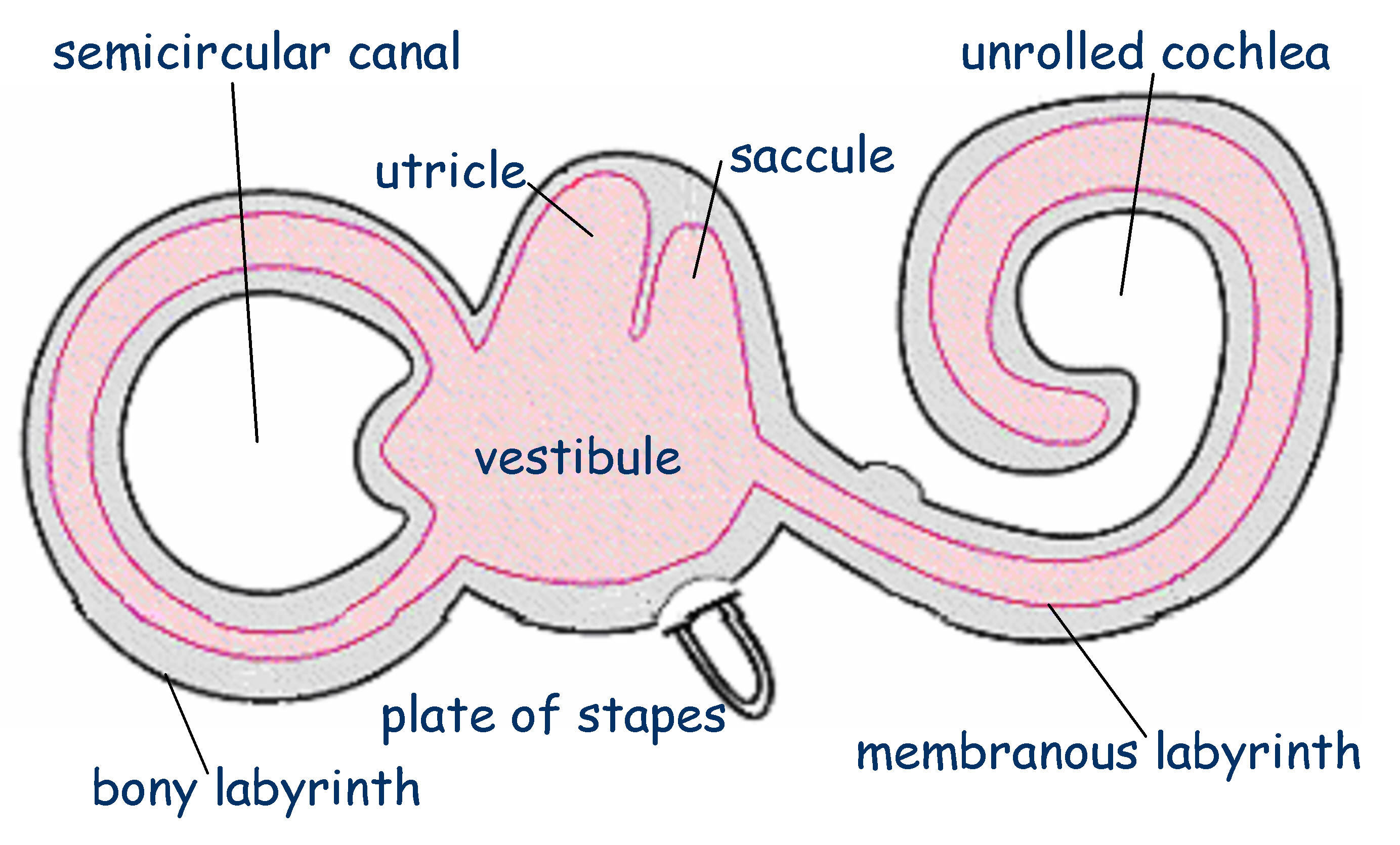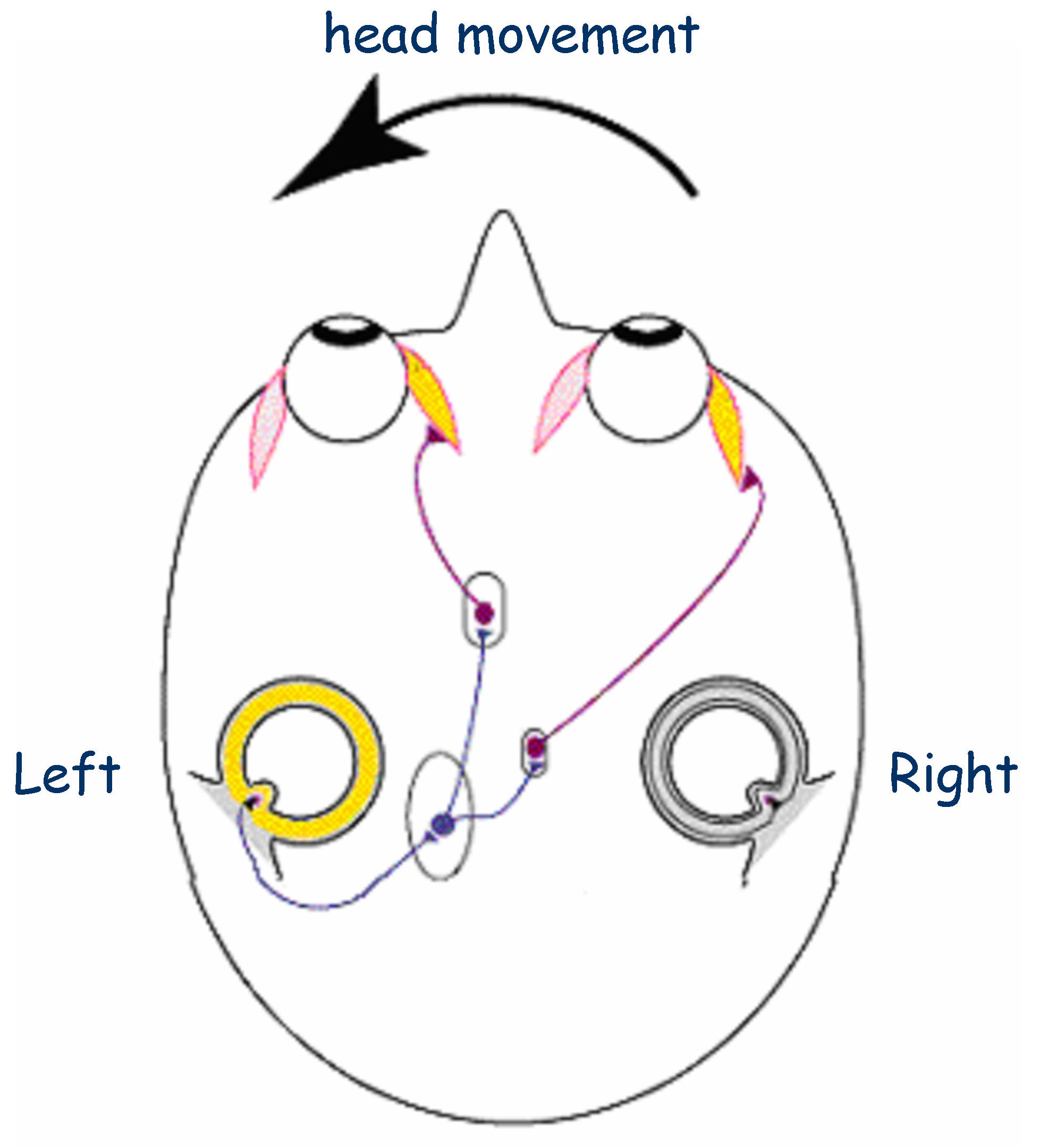Balance / Vestibular
There are five generally accepted senses that we become aware of at an early age: hearing, vision, touch, smell and taste. There are, however, other equally important sensory systems that are essential for normal functioning. Through our work we have found that the vestibular system (also known as the balance mechanism) can be critical to proper development from birth onwards.
 The vestibular and auditory senses are both part of the same organ – the inner ear. The receptors for both are located in a convoluted chamber, the bony labyrinth, within which a delicate continuous membrane is suspended, forming a second chamber, the membranous labyrinth. This entire fluid-filled structure is called the inner ear.
The vestibular and auditory senses are both part of the same organ – the inner ear. The receptors for both are located in a convoluted chamber, the bony labyrinth, within which a delicate continuous membrane is suspended, forming a second chamber, the membranous labyrinth. This entire fluid-filled structure is called the inner ear.
The inner ear is connected to the air-filled middle ear by a plate, the plate of the stapes, which vibrates in response to vibrations of the eardrum, setting the fluid of the inner ear moving back and forth. All of the inner ear organs branch off from a large central area within the inner ear, the vestibule – on one side are the hearing transducers (cochlea), on the other the vestibular semicircular canals, while two other organs, the utricle and saccule, measure horizontal and vertical acceleration.
The purpose of the vestibular system is to check the position and motion of our head in space. There are two components, one detecting rotation through the three semicircular canals, the other detecting motion along a line through the utricle and saccule organs.
We must remember that all these parts, the hearing and vestibular systems, are all located inside the same membrane, in the same fluid, using very similar ways to detect motion through the movement of hair cells. No wonder that auditory input directly influences the vestibular system.
 An important role of the vestibular system is to keep our eyes still in space while our head moves. The vestibular system exerts direct control over the eyes through three pairs of muscles. The direction of these eye muscles is exactly in line with the direction of the three semicircular canals, so that in general a single canal controls a single pair of eye muscles.
An important role of the vestibular system is to keep our eyes still in space while our head moves. The vestibular system exerts direct control over the eyes through three pairs of muscles. The direction of these eye muscles is exactly in line with the direction of the three semicircular canals, so that in general a single canal controls a single pair of eye muscles.
Head and eye movement diagramDirectly or indirectly, the vestibular system influences nearly everything we do. It is the unifying system in our brain that modifies and coordinates information received from other systems and has a great impact on our behaviour.
Under-sensitivity of the vestibular system often results in ‘clumsiness’, excessive stumbling and falling over and bumping into things, but also in the need to move all the time. Those children can be very good at football or ballet, but find it very hard to stand still, be quiet or concentrate. It can also influence their ability to read and write. Over-sensitivity of the vestibular system will result in an over-cautious approach to any movement, avoidance of PE lessons and sports, travel sickness, etc. Life will often be very stressful for those children.
In our work we find that many people with Dyslexia, Dyspraxia and other specific learning difficulties (SpLD's) display a difficulty in coordinated movement of the eyes related to a vestibular dysfunction. This leads to reading and writing problems as the eyes will tend to jump rather than smoothly track across a page.
The close interrelationship between the vestibular system and the ears and eyes is the reason why it is possible to retrain this system by influencing it through the auditory and visual senses, using sound and light.